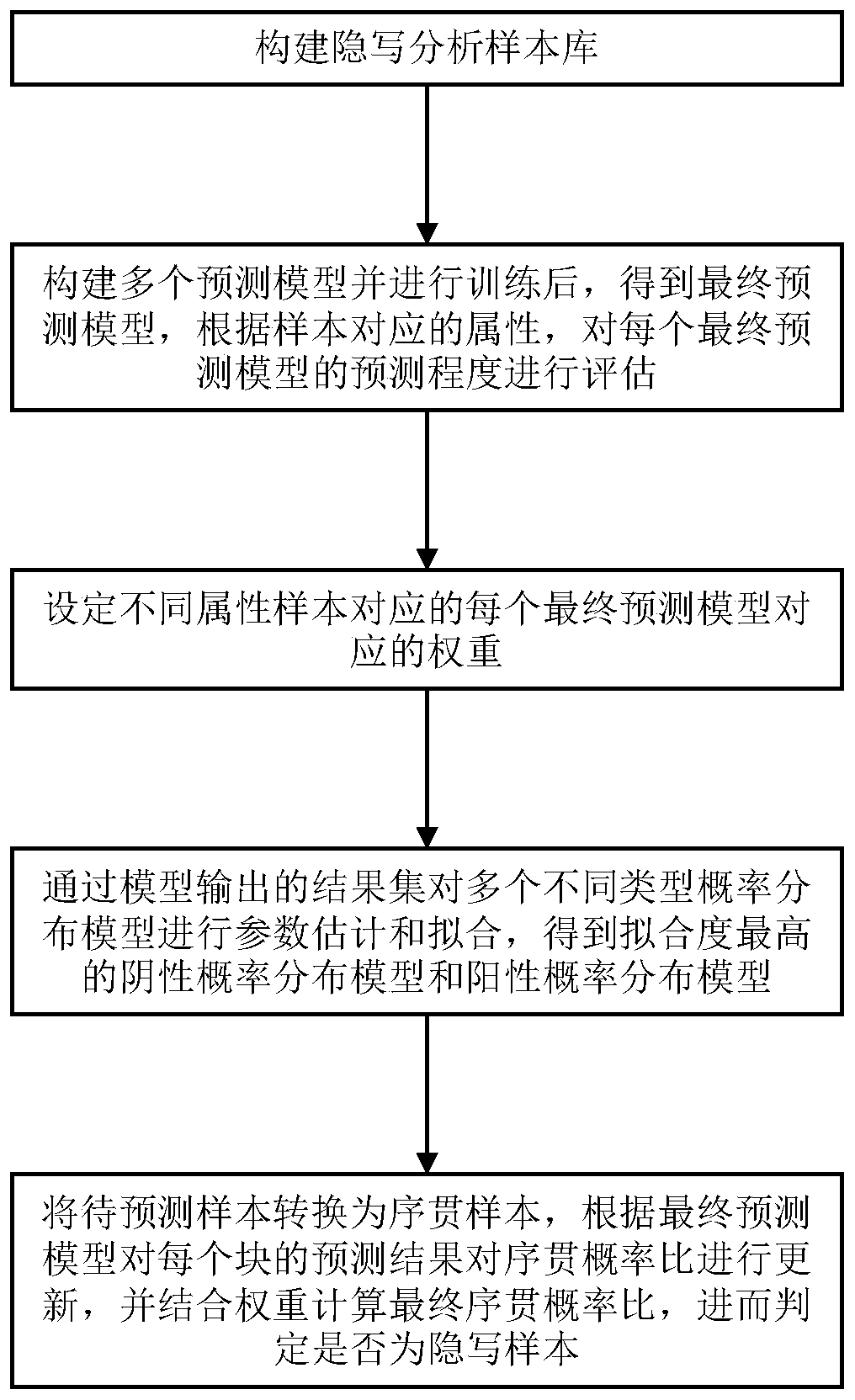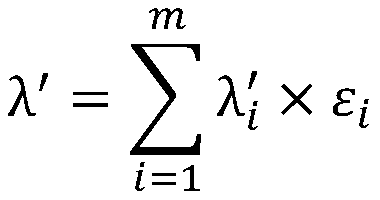Steganalysis method based on sequential hypothesis testing, terminal device and storage medium
A technology of steganalysis and hypothesis testing, applied in the field of steganalysis, it can solve problems such as unfavorable batch steganalysis, inflexible sampling methods, and lack of mathematical theoretical support, so as to improve resource utilization, improve feature recognition ability, The effect of shortening analysis time
- Summary
- Abstract
- Description
- Claims
- Application Information
AI Technical Summary
Problems solved by technology
Method used
Image
Examples
Embodiment 1
[0046] refer to figure 1 As shown, Embodiment 1 of the present invention provides a steganalysis method based on sequential hypothesis testing, including the following steps:
[0047] S1: Construct a steganalysis sample library, wherein the steganalysis sample library includes an original text set and a corresponding steganographic text set, wherein the steganographic text set is generated by at least two different steganographic methods.
[0048] The generation of the steganographic method may be an existing steganographic method, such as embedding a pseudo-random byte array, or a steganographic method proposed later, which is not limited here.
[0049] The steganalysis sample library is divided into a training set and a verification set, the training set is used for model parameter training and weight calculation, and the verification set is used for fitting estimation of the probability distribution model.
[0050] Step S1 in this embodiment comprises the following steps: ...
Embodiment 2
[0097] The present invention also provides a steganalysis terminal device based on sequential hypothesis testing, including a memory, a processor, and a computer program stored in the memory and operable on the processor, and the processor executes the The computer program implements the steps in the above method embodiment of Embodiment 1 of the present invention.
PUM
 Login to View More
Login to View More Abstract
Description
Claims
Application Information
 Login to View More
Login to View More - R&D
- Intellectual Property
- Life Sciences
- Materials
- Tech Scout
- Unparalleled Data Quality
- Higher Quality Content
- 60% Fewer Hallucinations
Browse by: Latest US Patents, China's latest patents, Technical Efficacy Thesaurus, Application Domain, Technology Topic, Popular Technical Reports.
© 2025 PatSnap. All rights reserved.Legal|Privacy policy|Modern Slavery Act Transparency Statement|Sitemap|About US| Contact US: help@patsnap.com



